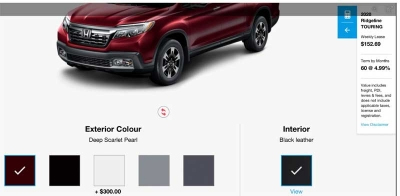I’ve been getting some phone calls recently from shops concerned about materials reimbursement when refinishing vehicles with three- or four-stage finishes.
I thought I’d address this---and the subject of materials reimbursement in general---here.
First, it’s important to know all three estimating systems have formulas related to three-stage finishes. CCC Information Services and Mitchell International do not have formulas for four-stage. Audatex says it believes the three-stage formula should apply to a four-stage vehicle---that’s a whole conversation for another day.
As I outline any time I talk about negotiating payment for something, materials reimbursement comes down to four key questions: Is what you’re asking for required? Is it included? Is there a pre-determined time? And if not, what is it worth?
You can watch a new three-minute video I created with SCRS on those four questions here.
So let’s walk through those.
First, is added materials reimbursement required for three- and four-stage vehicles? One way to document the answer is yes is to check the OEM repair procedures. When you decode a VIN in Toyota’s Technical Information System, for example, it identifies the paint code, and if it’s a three or four-stage finish, it lists that as a special color.
But here’s another cool idea: You can check online for sales literature from the vehicle manufacturer related to that vehicle. I’ve found Honda and Toyota brochures, for example, that clearly show new car buyers who choose vehicles with certain colors pay a premium for those finishes.
It seems to me that rather than telling shops they won’t pay more for the necessary materials when specialty finishes are involved, insurance companies should be assessing premiums based on the paint code, given it takes more to refinish those vehicles.
Another possible source of negotiation help when dealing with specialty finishes: The manufacturer of the paint line you are spraying.
I know Axalta Coating Systems, for example, gives an estimator the ability to print off from the scale a guide to specialty colors. It’s a regularly updated list of what make, model and year vehicles have three- or four-stage finishes, or that require a “limited use toner.”
Other paint manufacturers may offer something similar. It’s another way to demonstrate why additional reimbursement for materials is needed for those vehicles.
The next two of the four negotiation questions can be answered quickly. All of the estimating systems clearly state materials are not included in the refinish labor times, and there’s no pre-determined “time” for materials.
Don’t forget you can always use the Database Enhancement Gateway if there’s a question about whether something is included or not-included.
So in terms of refinish materials, it comes down to the fourth negotiation question: What’s it’s worth?
We’ll have some of the very latest industry data on that in March, when the report on our “Who Pays for What?” survey related to refinish, which took place in January, is compiled.
But even the 2020 survey report offers some good insights. Although about 70% of shops still rely on the traditional multiplier method---dollars per refinish hour---to attempt to cover their cost of paint and materials, that’s been changing. The percentage of shops using invoicing systems to bill for refinish materials has steadily risen over the past five years, from 19% to 28%.

And the majority of shops who use them say they are paid by the eight largest insurers "always" or "most of the time" when they bill based on the charges calculated by their invoicing system. Shops report with the exception of GEICO, the top eight insurers all agree to the invoiced amount 60% to 70% of the time.
More than half of shops using a materials invoicing system say they use their paint company scale to produce these invoices; that’s more than twice the percentage that scale-produced invoices as recently as 2016.
More than one in four shops using invoicing systems use Mitchell’s Refinish Materials Calculator. And about 15% say they use some other system, such as PMC Logic, PaintEx, etc.
I believe this shift toward using invoicing versus the multiplier method will continue, particularly as the use of three-stage, four-stage and other specialty finishes increases, and as the paint companies continue to improve the integration of their paint scales and systems with the estimating and shop management systems.










Mike Anderson